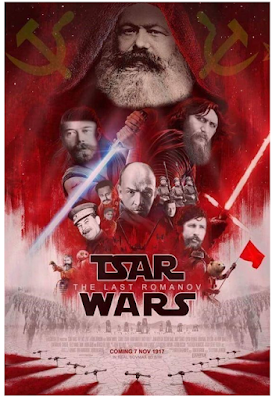Videos are a great tool to introduce and prepare content
language and instruction for teaching practice according to your aims: anticipation, deduction, agreement,
disagreement, possibility, probability, conclusion...
This is a list of YouTube
Channels that I like for my lessons and that you can use for this activity.
- https://www.youtube.com/channel/UCE9mrcoX-oE-2f1BL-iPPoQ
World Bank has many videos very useful for Geography
- https://www.khanacademy.org/humanities/becoming-modern/romanticism/romanticism-in-france/v/g-ricault-raft-of-the-medusa-1818-19?modal=1
Great videos analysing works of art from
-
https://www.youtube.com/watch?v=lDQ1Lf3N1hk
Some humour for the French Revolution
- https://www.youtube.com/channel/UCXVCgDuD_QCkI7gTKU7-tpg/featured
National geography for kids
-
https://www.youtube.com/watch?v=dHQZErtwA3E
Why not mixing History and Halloween? From History channel.
-
https://www.youtube.com/user/TEDEducation/videos
A lot of stuff on TED education videos
-
https://www.youtube.com/user/historyteachers/videos
History teachers videos with famous songs…It is a MUST!
Escape rooms and break outs are a good resources for the last days of the term, even though there is more than just "playing the game" behind them, I leave you here some "experiences" already designed:
- LA DAMA escape room from the "Archivos de Castilla y León"
- EL ORO DE MOSCÚ by Juanjo Nervión
This year, by the end of this term I've tried this one QUIQUE CASTILLO with my 3º ESO students, and it was easy and fine for them. The idea is to work on the third term with my English and Spanish literacy teachers to crete one, combining the content of cities from 3º ESO.
Free Social Studies Worksheets
| Document Based Activities |
World Problems and Issues
| World Problems and Issues |
Social Studies Mixed Review Practice
Second grade social studies questions
Third grade social studies questions
Fourth grade social studies questions
Fifth grade social studies questions
Sixth grade social studies questions
Social Studies Theme Units
Life Skills
| Life Skills |
Time Lines
| Create your own time lines! |
Geography numeracy and literacy mats.
GEOGRAPHY IMAGES
Inside Geography images
- Geography images: Climate
- Geography images: Environment
- Geography images: Ice action
Geography images: Natural resources
Geography images: Rivers- Geography images: Rocks
- Geography images: Sea action
- Geography images: Settlements
Geography images: Soil
- Geography images: Weather
RECYCLING ACTIVITY
Shared by Fernando Martín:
"My activity was about recycling Arts, and I think this activity could be very interesting to develop with other subjects too.
This is the link for the process:
https://www.weareteachers.com/recycle-drop-game/?utm_source=Facebook&utm_campaign=PepsiCoRecy_1712_Art4Kerplunk&utm_content=1541799257&utm_medium=social
Kids love this Recycle drop game:"
Miriam Hernando shares about online teaching: two helpful and meaningful
infographics.

https://www.educarex.es/pub/cont/com/0064/documentos/10_consejos_clasesencasa.pdf
http://hanshack.com/figuregrounder/
This is the image for the area where my school is

Starters are a good tool either to begin or as final reflection on the lesson. This Power Point gives you plenty of ideas to use them.
Resource provided by Miryam Hernando.
Click on the image.

TEACHER WELLBEING

Comparto estos recursos de teachitenglish.co.uk en estos últimos días de curso.
Nuestro bienestar como profesores es fundamental para una escuela saludable y para la salud mental de los alumnos.
This is a summary and a sample, but you have the whote document uploaded:
10 golden rules of mental health wellbeing
Andy Sammons, Head of Department and author of 'The Compassionate Teacher' @compassionteach, shares 10 rules you should follow to help you handle the demands of teacher workload and limit your chances of reaching burnout.Paying attention to your mental health
How I became a human doing
Example golden rule
Take care of yourselves.
When teaching a subject in English, we are sometimes stressed because we are not really sure if the students have understood a certain topic or exercise.
I want to stress that students also have difficulties with the subjects taught in Spanish, and teachers worry about it too. Rephrasing and asking for clarification using simple sentences are good tools.
Perhaps we could share come of the expressions and vocabulary we use in the classroom. Le me begin with it with a couple of resources:
I. Poster.
Very useful for the students if you place some copies on the classroom walls or you hand out a copy to each of them.
Source: https://i.pinimg.com/originals/6f/bb/eb/6fbbeb7830bc35702f143666fcf499c2.jpg

II.
Checking for Understanding:
Do you understand?
Expressing lack of understanding:
I don’t get it.
I’m sorry. I don’t understand what you mean.
Asking for clarification:
Could you clarify that, please?
What do you mean by that?
Ok, I got what you mean.

This is a useful poster which gives practical examples of questions that can be used at any stage of the assessment process. It connects Bloom's Taxonomy and Thinking Skills.
https://en.unesco.org/programme/mow
UNESCO’s Memory of the World Programme promotes the preservation and access to humanity’s documentary heritage.
The main objective of the Programme is to ensure the preservation, by the most appropriate means, of documentary heritage which has world significance and to encourage the preservation of documentary heritage which has national and regional significance.
Another element of the Programme is to raise awareness in the Member States of their documentary heritage, in particular aspects of that heritage which are significant in terms of a common world memory.
The Programme seeks to develop products based on this documentary heritage and make them available for wide distribution, while ensuring that the originals are maintained in the best possible conditions of conservation and security.
Here I leave a link https://storycorps.org/about/ to an oral project to preserve memories, it is less offcial but it a nice project that you could use in two ways:
- as a listening in class
- to create your own projects (the ones presented have been done by 3º ESo students from my school, here they go the links



































No hay comentarios:
Publicar un comentario